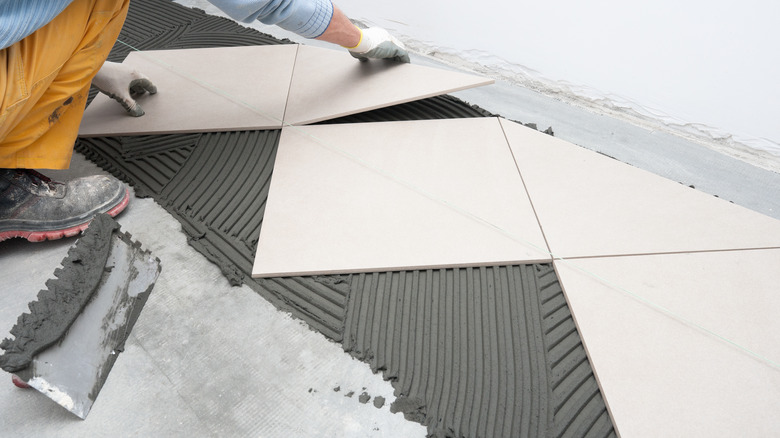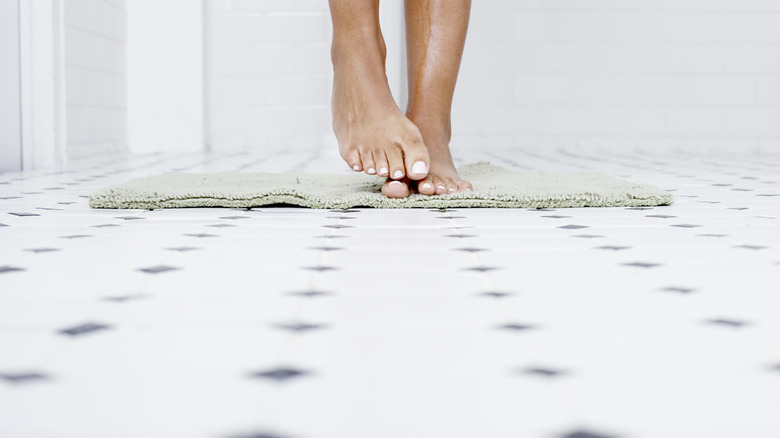The Biggest Downsides To Tile Flooring You Should Consider Before Installing
From highly detailed patterns to simple white squares, tiles offer a range of options that let you express your style. Despite being durable, tile floors come with some disadvantages. Achieving the perfect tile floor installation requires ideal conditions and careful installation techniques that are challenging for beginners, tiles and the grout lines between them are made of porous materials, the flooring lacks the warmth and coziness of carpet or wood, and the smooth surface becomes slippery when moisture gets on it, whether that's water from shoes on a rainy day or spills in your kitchen and bathroom.
Your underlayment needs to be strong and flat to create a sturdy foundation. Piecing together tiles presents a challenge, especially with intricate tile patterns that are more challenging to lay precisely. Without a flat, sturdy subfloor, you risk uneven tiles that create a tripping hazard. Homeowners also sometimes struggle to install tiles evenly with consistent gaps between them. And, cutting tiles to fit the edges or create your intricate designs can be difficult and requires specialty tools that increase your project costs. Hiring a professional installer eliminates those worries. It'll add an average of $8 to $20 per square foot, but you'll get professional results and reduce your stress. Though once installed, tiles still have potential problems.
Can you overcome the drawbacks of tile flooring?
Porcelain and ceramic tiles don't usually need to be sealed, but natural stones require regular sealant applications to make them water-resistant. Without the coating, the tiles absorb anything that spills on them, causing stains or discoloration. Grout contains a mix of cement, sand, and water, creating porous joints between the tiles. Soap scum, dirt, and other debris settle in easily and are difficult to remove. Add moisture to the mix and you get ideal conditions for mold and mildew growth.
Applying sealant to grout lines saves time and makes your DIY grout-cleaning methods more effective. However, grout sealant doesn't last forever. You generally need to reapply it at least once a year. In busy rooms, you may need to reapply more often. An alternative is to use epoxy grout, which contains epoxy resin and fillers to create a waterproof and impermeable grout line. You don't need to seal epoxy grout, and it wipes clean easily.
Tile often feels cool underfoot. That's not because the tile itself is colder, though. Tile materials conduct heat so well that they pull heat out of your bare feet quickly, making them feel cooler. To add warmth to a tiled room, consider radiant floor heating, which works well on ceramic floors due to its heat conduction capabilities. Alternatively, dress up your room by choosing an area rug to soften the hard surface and add insulation. Rugs warm up the room physically and visually to bring an inviting feel. For spaces where moisture is an issue, such as bathrooms, kitchens, and entryways, choose tile with slip-resistant texturing and add nonslip mats.

